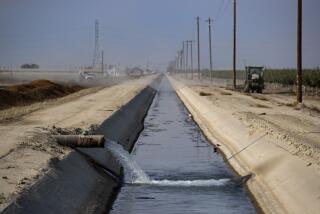Wetlands: Chance to Survive
- Share via
Saving America’s remaining wetlands may be one of the first environmental success stories of the new Bush Administration. Among the many environmental proposals awaiting Bush on Jan. 20 is the plan of the National Wetlands Policy Forum. During the election campaign, Bush endorsed the primary goal of the forum before its detailed plan was even released: that there be no further net loss of American wetlands.
The forum was assembled in the summer of 1987 by the Conservation Foundation at the request of the Environmental Protection Agency. Chaired by Republican Gov. Thomas H. Kean of New Jersey, the group included environmental associations, state and local officials, academics and representatives of the oil, timber and agriculture industries.
The forum’s 67-page report, issued this week, represents what bureaucrats would call a comprehensive action plan to provide greater protection for the nation’s disappearing wetlands. At the same time, it would streamline the tangled and confusing regulatory process that determines where the development of marginal wetlands may be allowed, coupled with mitigating factors like the creation of new wetlands or the restoration of former wetlands that may have been dredged, drained or damaged.
The first goal of the program is to prevent any further net loss of the nation’s estimated 100 million acres of wetlands--about half the area believed to have existed at the time of the European settlement of the continent. Ultimately the aim is to increase both the quantity and the quality of the nation’s wetlands.
Wetlands were lost at an estimated rate of 400,000 to 500,000 acres annually during the two decades preceding 1975, the forum said. In California, about 90% of the original wetlands are gone, including millions of acres of marsh in the Sacramento and San Joaquin valleys that were converted to farmland.
Fortunately, the rate has slowed in recent years as the value of wetlands has won greater appreciation. The forum says that wetlands support a third of the nation’s endangered species and provide spawning and nursing grounds for 60% to 90% of the nation’s commercial fish. In some areas they provide flood control, sediment filtering, pollution control, erosion control and the recharging of groundwater basins.
In all, the forum proposed about 100 actions to provide the nation with a more effective wetlands-protection scheme, including state legislative action, tax incentives and both private and public acquisition of key wetlands. Some conservation groups do not want any more wetland conversion at all. But it is impractical to argue that wetland conversion should cease entirely. The important point is to have a program for assessing wetlands and whether and how they should be protected, and a logical process for carrying out the decisions.
That process is outlined in the forum’s report. The next step is for Congress and affected state legislatures to put the proposals into law.
More to Read
Sign up for Essential California
The most important California stories and recommendations in your inbox every morning.
You may occasionally receive promotional content from the Los Angeles Times.













